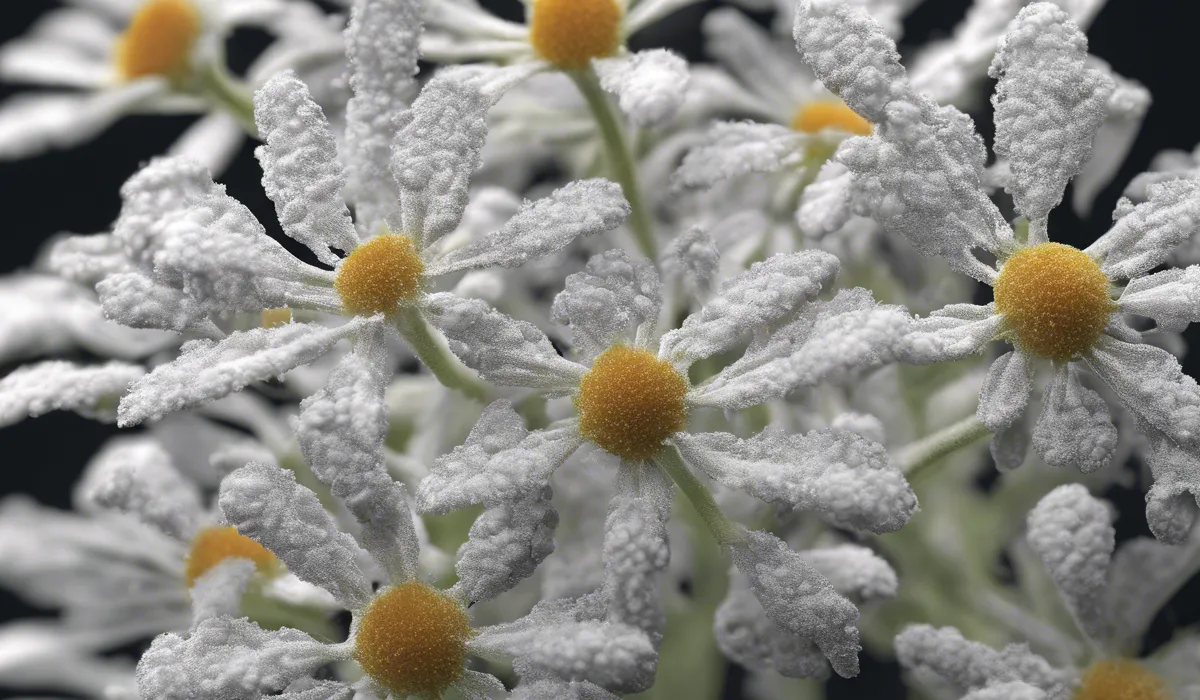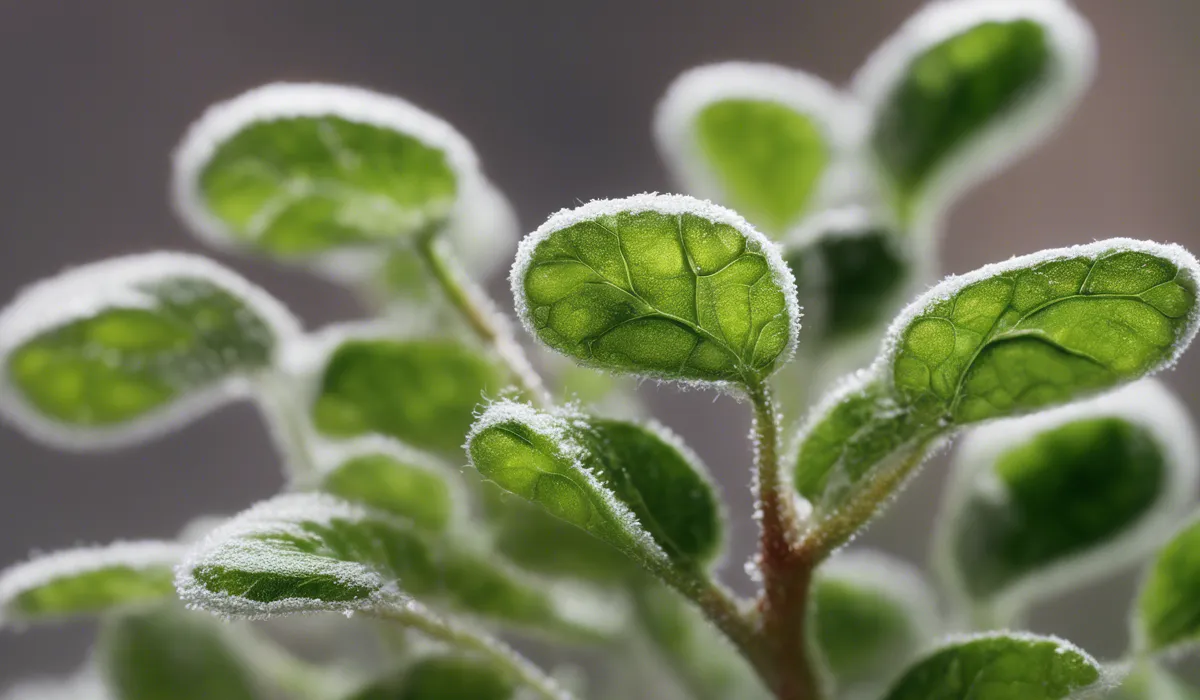Yes, bleach can kill powdery mildew. A diluted solution of 1 part bleach to 9 parts water effectively disinfects infected surfaces. Apply with care as bleach can harm plants and surfaces.
Understanding Powdery Mildew

Definition and Characteristics of Powdery Mildew
Powdery mildew refers to a group of fungal diseases that affect a wide range of plants. These fungi thrive in warm, dry climates and are known for the distinctive white to gray powdery spots they form on the leaves and stems of plants.
Unlike many fungal diseases, powdery mildew does not require water to infect plants, making it a unique challenge for gardeners and farmers.
Common Plants Affected by Powdery Mildew
This persistent fungus targets various plants, including but not limited to cucumbers, pumpkins, squash, grapes, and roses.
It can affect almost any type of plant, causing gardeners and farmers to remain vigilant for signs of infection to protect their crops and ornamental plants.
Lifecycle and Spread of Powdery Mildew
Powdery mildew fungi overwinter in plant debris and begin their lifecycle as temperatures rise. Spores are spread by the wind to new hosts.
The spores germinate on the plant surface and penetrate the plant tissue to absorb nutrients, which can happen in as little as three days under optimal conditions.
Impact on Plant Health and Yield
Plants infected with powdery mildew often exhibit stunted growth, distorted leaves, reduced yield, and lower quality fruit.
In severe cases, it can lead to the death of young plants. Timely and effective treatment is essential to minimize these impacts.
Role of Bleach in Combating Powdery Mildew

Chemical Composition of Bleach and Its Disinfectant Properties
Bleach, primarily consisting of sodium hypochlorite, is a powerful disinfectant that kills bacteria, viruses, and fungi.
It works by destroying the proteins and nucleic acids that make up these microorganisms.
How Bleach Works Against Fungi and Mold?
When applied to powdery mildew, the active ingredients in bleach can effectively disrupt the structure of the fungal cells, leading to their death.
This action helps to stop the spread of the disease and prevent further damage to the plant.
Previous Studies and Results on Bleach Effectiveness
Studies have shown that a diluted solution of bleach is effective in killing powdery mildew spores.
It is important to note, however, that this should be used with caution, as too strong a solution can damage the plants you are trying to protect.
Safety Precautions When Using Bleach on Plants
When using bleach to treat powdery mildew, it is crucial to dilute it properly, typically at a ratio of 1 part bleach to 9 parts water.
Apply the solution carefully, avoiding excessive contact with the plant, and rinse with water afterward to minimize potential harm.
Alternative Methods to Manage Powdery Mildew

Cultural Practices for Prevention and Control
Good garden hygiene, such as removing infected debris and providing adequate plant spacing for airflow, can help prevent the spread of powdery mildew.
Choosing resistant plant varieties and ensuring proper nutrition and watering are also effective cultural practices.
Organic and Chemical Fungicides
There are several fungicidal options for treating powdery mildew. Organic options include neem oil and sulfur-based products.
For more severe infections, chemical fungicides may be necessary, but these should be used as directed to minimize environmental impact.
Biological Control Options
Biological controls involve using natural predators or antagonists to manage powdery mildew.
Certain bacteria and fungi can be applied to plants to compete with or inhibit the growth of powdery mildew.
Integrated Pest Management Strategies
Integrated Pest Management (IPM) is a holistic approach that combines cultural, physical, biological, and chemical methods to control pests and diseases like powdery mildew.
Monitoring plants and applying treatments only when necessary can reduce reliance on chemicals while effectively managing the disease.
FAQs About Bleach Killing Powdery Mildew
Can bleach effectively kill powdery mildew?
Yes, bleach can effectively kill powdery mildew when used in a diluted solution of 1 part bleach to 9 parts water.
Is it safe to use bleach on all plants to treat powdery mildew?
No, while bleach can kill powdery mildew, it can harm plants; therefore, it should be applied with care and only to surfaces that can withstand bleach without damage.
How do you apply bleach to infected surfaces with powdery mildew?
Apply the diluted bleach solution (1:9 ratio) to the infected surfaces using a spray bottle or cloth, taking care to avoid contact with plants.
Can bleach be used on all surfaces to kill powdery mildew?
Bleach can be used on many surfaces to kill powdery mildew, but it may not be suitable for all materials. Test a small area first to ensure it does not cause damage.
What precautions should be taken when using bleach to kill powdery mildew?
Wear protective gloves and eyewear, ensure good ventilation, and carefully follow the dilution instructions to prevent harm to plants and surfaces.
Final Thoughts
Bleach is effective in eliminating powdery mildew when used in a diluted form, with a recommended ratio of 1 part bleach to 9 parts water.
This solution can disinfect surfaces tainted by the fungus. However, care must be taken when applying bleach, as it has the potential to damage both plants and various surfaces it may come in contact with.
